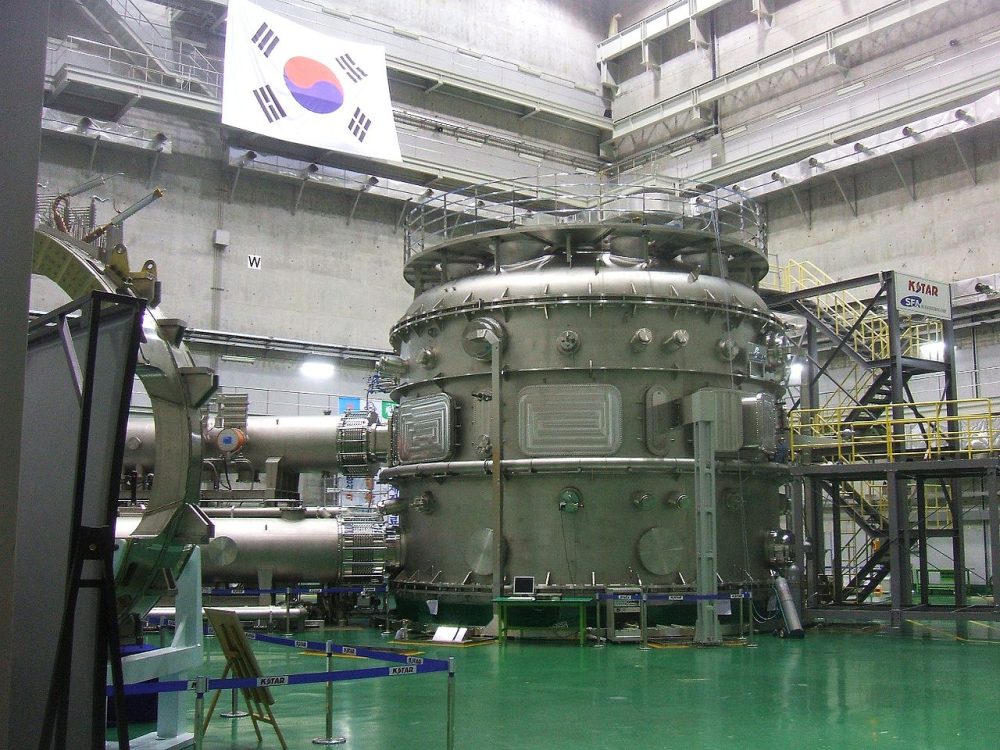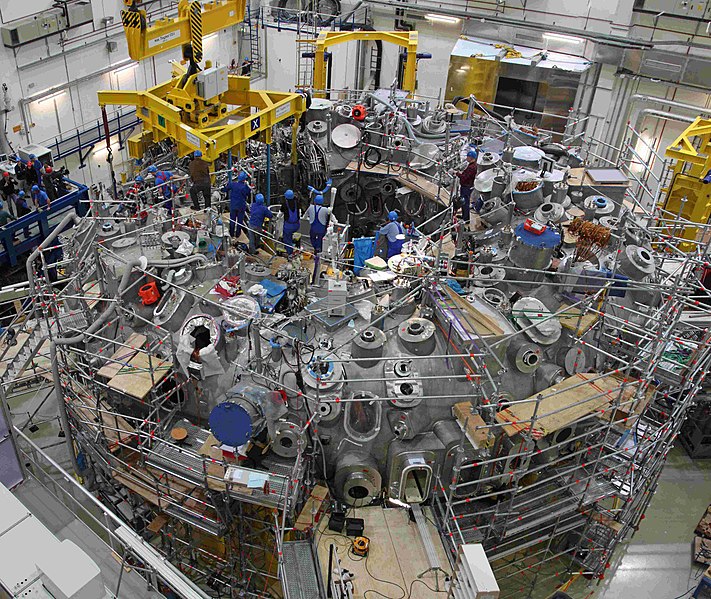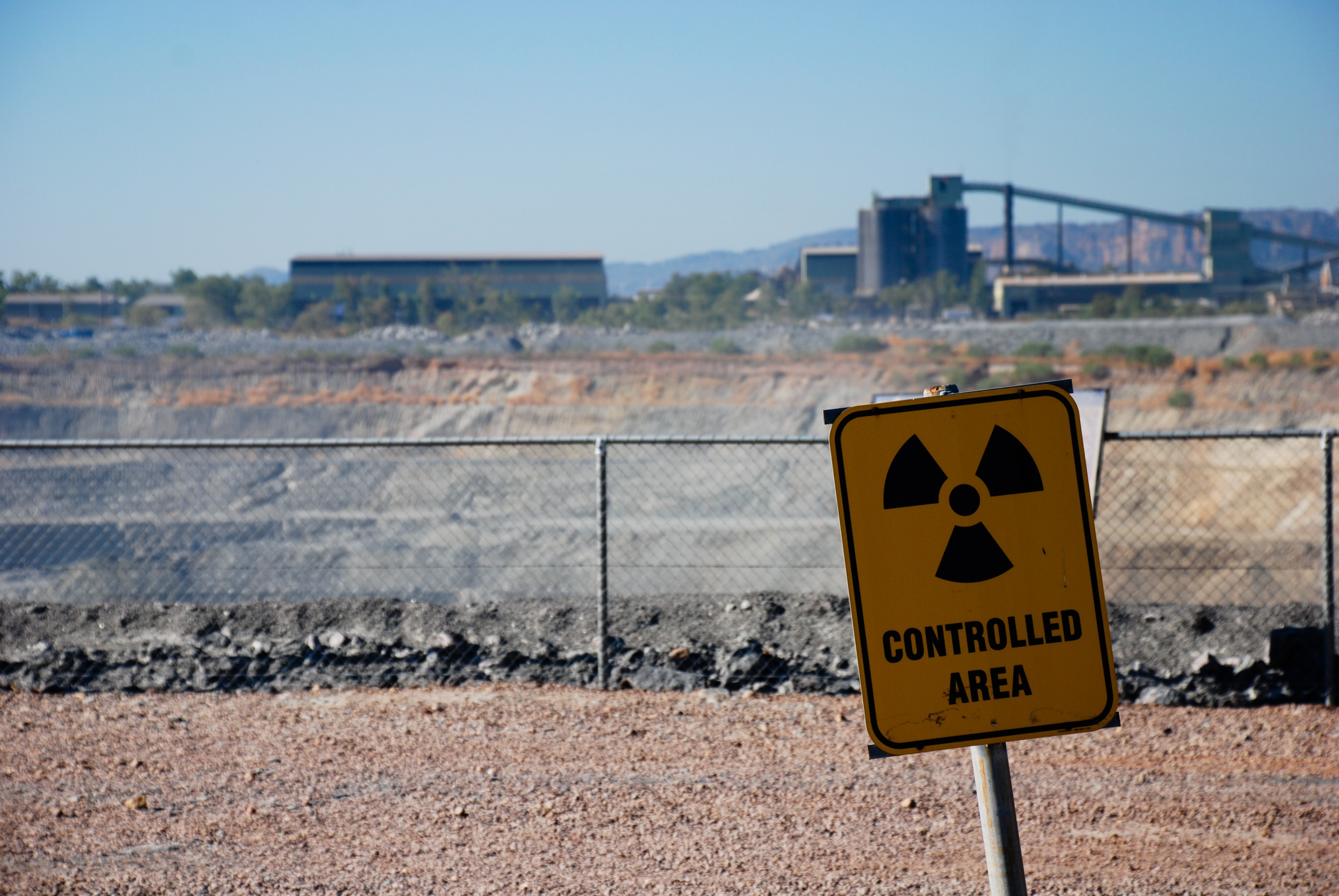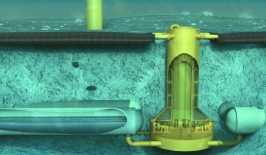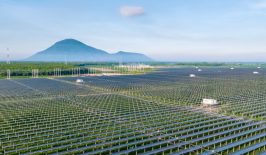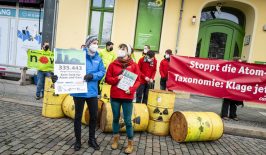Nuclear fusion may seem the stuff of sci-fi, but according to recent announcements it may soon become a real possibility. An experimental fusion reactor in South Korea was able to sustain fusion operation for 20 seconds – a notable achievement considering the infancy of the field.
In actual fact, the achievement at the Korea Superconducting Tokamak Advanced Research (KSTAR) device was achieved in 2020, but only now has the claim been fully peer-reviewed and published in the Nature journal. The tokamak – a donut shaped device which controls thermonuclear fusion – was able to reach ion temperatures of 100 million degrees Celsius, around seven times hotter than our sun. Prior to this breakthrough, the KSTAR had only maintained 100 million degrees for 10 seconds.
The KSTAR uses powerful magnetic fields to create and stabilise an ultra-hot plasma, the heat of which can then be used to generate electricity. Unlike in common nuclear fission, which separates atomic nuclei via a chain reaction, nuclear fusion merges nuclei together, generating huge amounts of energy. In theory, if the hardware is up to the task, nuclear fusion could replicate the processes of our sun and provide near limitless power with only basic raw materials and zero emissions. Most fusion reactors use hydrogen isotopes, often derived from seawater, as the basis of the process.
The major issue for researchers in regards to fusion power is two fold. Firstly, current experiments consume more power than they produce, and key to overcoming this is maintaining high temperatures for longer. However, the second issue is the breakdown of mechanical parts. When dealing with huge temperatures, equipment can quickly become destroyed. The key to the KSTAR’s achievement was the use of Internal Transport Barriers (ITB) to help control the confinement and stability of the reaction.
The KSTAR is not the only reactor pushing the boundaries of energy science. Similar tokamak devices, such as the UK’s MAST, France’s ITER or China’s EAST are also trying to unlock the secrets of fusion. In fact, it’s already possible KSTAR’s record has been smashed. The Korean team themselves may have broken their own record last year, while China claims its reactor achieved temperatures of 120 million degrees Celsius for 101 seconds in 2021. Other approaches, such as Germany’s Wendelstein 7-X device, uses stellarators – AI-designed magnetic coils which keep the superheated plasma in place. Although these make more stable reactions than tokamaks, they are harder to heat.
In any case, such breakthroughs are a significant step towards achieving fusion energy. Some researchers suggest a fully functioning fusion reactor could be viable by the 2040s.
Fusion vs Fission
For some, talk of ‘nuclear’ fusion may cause alarms to ring. With the Chernobyl and Fukushima disasters still in recent memory, some states – such as Germany – have sought to move away from nuclear energy. Although nuclear fission can reliably produce large amounts of energy, it comes with significant meltdown risks if mismanaged, produces longterm radioactive waste and could be used as a stepping stone for nuclear weapons.
However, it’s important to note that nuclear fusion is not the same as fission. Both use nuclear processes (i.e. the manipulation of the nuclei of atoms), but beyond this there are little similarities. In fact, the International Atomic Energy Agency suggests fusion energy could be one of the most environmentally friendly sources of energy.
Whereas nuclear fission involves the splitting of a heavier element into lighter ones, fusion joins two lighter elements into a heavier one. In both cases, energy is freed because of the differences in the nuclear binding masses. Within fusion energy, the difference or “missing mass” is converted into energy via Einstein’s equation of E=mc2. Since ‘c’ (the speed of light) is very large, even a small amount of missing mass can be turned into a huge amount of energy.
While nuclear fission uses radioactive fuels such as uranium 235 – a relatively rare element that must be enriched from more common uranium – fusion mainly uses isotopes from hydrogen, such as deuterium and tritium. These hydrogen isotopes are then superheated in reactors to a high enough temperature to overcome the so-called Coulomb barrier and fuse together. For enough energy to be produced, this reaction must be maintained for long enough to prevent cooling.
Fusion has several distinct advantages over fission. Its base fuel – hydrogen – is the most readily available element in the universe and non-radioactive. It requires no mining, can be easily synthesised from water and is not toxic. The process of fusion also creates no greenhouse gases or carbon dioxide, with the only byproduct being helium, a valuable gas in short global supply, and tritium – a slightly radioactive – isotope. Unlike the radioactive waste from fission power, tritium has a short half-life (12.3 years) after which it can be used again in power generation.
Fusion is also considered inherently safe and there is no risk of a meltdown. In fission energy, the issue is not producing high amounts of heat but containing it. Since nuclear fission relies on a chain reaction, vast amounts of coolant are required to keep the temperature stable. If this coolant becomes exhausted or is otherwise unavailable, a fission reactor can quickly exceed its safety perimetres – resulting in a meltdown.
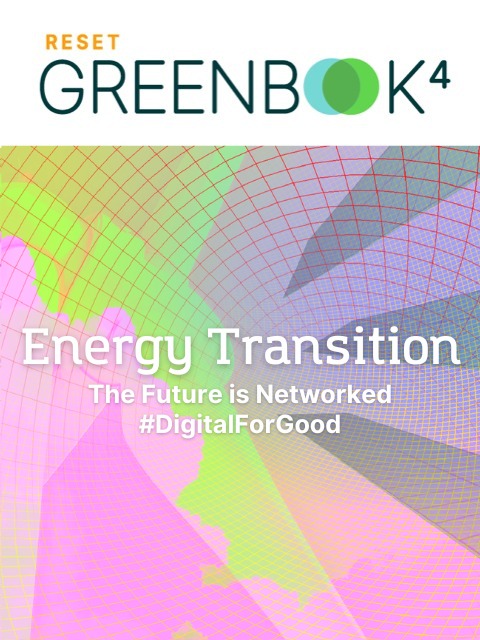
The 1.5 degree target is unattainable without a real transformation of our energy system. But how can it succeed? What are the energy sources of the future? What digital solutions are ready and where are innovations needed? And how can the transformation be driven forward?
The RESET Greenbook “Energy Transition – The Future is Networked” presents digital, innovative solutions and sheds light on the background.
The opposite is true with fusion. Instead, the challenge is maintaining the temperature in the first place. If a fusion reactor was damaged or otherwise impaired, the temperature would drop and the reaction simply shut down.
Finally, fusion reactors cannot be used to develop weapons. Although hydrogen bombs use the same methods of nuclear fusion, they require a fission bomb to generate the required heat. Furthermore, since the fusion fuel is constantly injected and consumed, it is never in a sufficient amount to produce the instantaneous power needed for a nuclear explosion.
This may now all be sounding too good to be true, but of course there are downsides of nuclear fusion. Firstly, although deuterium is readily available in water, the main source of tritium is from nuclear fission reactors. So a small number of fission reactors – with all their inherent risks – would be needed to supply tritium for fusion reactors, at least until a large enough supply is developed. In some cases lithium is also used in reactions, a metal which must be mined.
Another issue is the radiation of the components themselves. The intense neutron fluxes of the reactor could damage its walls, creating longer term radioactive waste and potentially leaking out. Blanketing materials are being developed to minimise this risk, but it remains a continual concern.
But perhaps the biggest hurdle is the science itself. There is still much to be done to fully understand the process of nuclear fusion. In fact, the full function of the above-mentioned ITBs are still not fully understood by researchers themselves. These scientific hurdles combined with the huge economic cost has created the scientific maxim that “fusion energy is always thirty years away”.
But of course, the climate crisis is happening now. Although fusion may appear to be the perfect silver bullet for near limitless energy, we can not guarantee it will come to our rescue any time soon. Although pursuing fusion is still an admirable and worthwhile endeavour, we must remember there are other methods available now that can be explored and expanded.
